Search results for: 'Mitte'
-
 Antike Münzform für Falschgeld - Fund aus Northamptonshire
Antike Münzform für Falschgeld - Fund aus NorthamptonshireGefunden in Pitchley, UK, am 1. Januar 2008. Der Fund ist mit PAS Nummer dokumentiert und wissenschaftlich untersucht. Von außerordentlicher Seltenheit.
Price: on request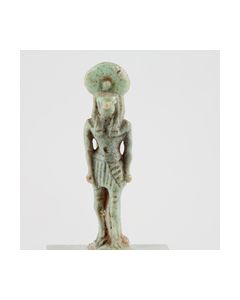 Ägyptisches Amulett des Sonnengottes Ra
Ägyptisches Amulett des Sonnengottes RaMännlichem Körper mit Lendenschurz, darauf Falkenkopf mit Sonnenscheibe. Spätzeit des Alten Ägyptens. Aus der Sammlung des Ägyptologen Dr. Müller-Feldmann.
Price: on request Gallo-Roman animal fibula
Gallo-Roman animal fibulaZoomorphe Fibel mit Wildtier als Motiv. Schmuckstück mit religiöser Symbolik, vergleichbar einem Kreuzanhänger bei heutigen Christen. Gefertigt im 1. bis 3. Jh. n. Chr. in Gallien.
Price: on request Rotfigurige Oinochoe - Frauenkopf
Rotfigurige Oinochoe - FrauenkopfMuseal erhalten, keine Schäden, nicht restauriert, der Überzug noch weitgehend frisch erhalten. 4. Jh. V. Chr. Auf dem Körper ein großer rotfiguriger Frauenkopf. Aus alter deutscher Sammlung.
Price: on request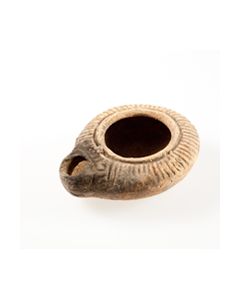 Spätrömische Öllampe vom Mamre-Typ
Spätrömische Öllampe vom Mamre-TypDas in der Bibel mehrfach erwähnte Mamre war u. a. der Wohnort Abrahams. Offene flache Lampe mit Halbvoluten.
Price: on request Pair of pins with chain
Pair of pins with chainThe pair of pins dates to the early Iron Age of Luristan. It is made from Bronze and Iron. This state of preservation is extremely rare for composite objects.
Price: on request Gnathian Oinochoe with golden ivy leafs and lion head
Gnathian Oinochoe with golden ivy leafs and lion headElegant large vessel, so-called Gnathia pottery. Very well preserved, delicate piece of ancient art. Only minimal wear.
Price: on request Early Merovingian silver fibula
Early Merovingian silver fibulaMuseumswürdiges Exemplar aus dem 5. bis 6. Jh. n. Chr. Fränkischer Fibeltyp mit typischer rautenförmiger Fußplatte. Sehr kunstvoll verziert mit Vergoldung, Schmucksteinen und stilisiertem Tierkopf.
Price: on request Römische Zwiebelknopffibel
Römische ZwiebelknopffibelMassive Zwiebelknopffibel aus Bronze. 23,2 Gramm, aus dem 4 Jh. n. Chr. Ungewöhnliche, kantige Zwiebelknopfverzierung.
Price: on request Geripptes römisches Glasfläschchen
Geripptes römisches GlasfläschchenKleines Glasgefäß, typisch für antike Haushalte der Levanteküste. Römisch bis Spätrömisch. Mit ungewohnter Abwandlung des Rippendekors. 2. bis 5. Jh. n. Chr.
Price: on request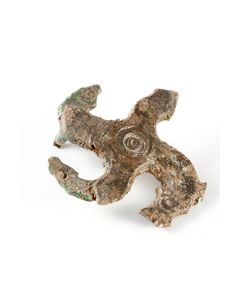 Provinzialrömische Fibel, Swastika
Provinzialrömische Fibel, SwastikaRömische Fibel aus Bronze, Swastika-Form, mit tierförmigen Enden aus stilisierten Pferdeköpfen. Soldatenfibel des 3. bis 4 Jh. n.Chr., Balkan-Raum.
Price: on request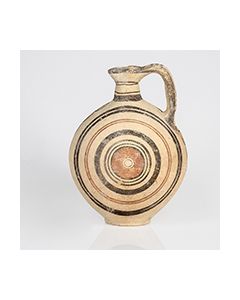 Large published Cypriot oinochoe
Large published Cypriot oinochoeDating to the early cypro-archaic period, so-called bichrome ware IV. From an old German private collection, acquired at Sotheby's in 1970. Coming with an ArtLoss certificate.
Price: on request Luristanischer Randleistendolch
Luristanischer RandleistendolchParadebeispiel für einen luristanischen Dolch in exzellenter Erhaltung. Export aus Israel, Ausfuhr mit Genehmigung der israelischen Kulturbehörde (IAA) 2012.
Price: on request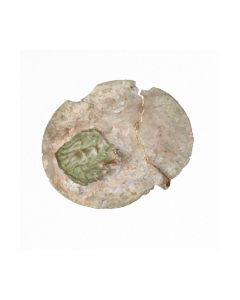 Ancient fibula from the Hattatt collection
Ancient fibula from the Hattatt collectionAncient fibula of the rare adlocutio type. Repoussé work of a scene from a Roman sestertius of Hadrian in celtic style. Find from Dorset in Roman Britain. Published in Hattatts famous book series on ancient fibulae.
Price: on request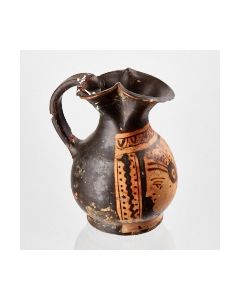 Red figure Oinochoe from a very old German collection
Red figure Oinochoe from a very old German collectionExcellent condition and brilliant colors. Decorated with a large red figure female head. 4th century BC.
Price: on request Roman provincial fibula of the horsemen
Roman provincial fibula of the horsemenThe swastika shaped brooch with horse head terminals was worn by the cavallery in Late Antiquity. In particular by the troops recruited by the Romans from their Pannonian Foederati. It might have been a symbol for strength or designated a military rank.
Price: on request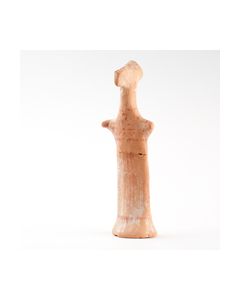 Greek Boeotian Goddess made of terra cotta
Greek Boeotian Goddess made of terra cottaAnthropomorphe Figur aus Terrakotta mit dunkelroter Bemalung. Bei dem Idol handelt es sich um einen böotischen Sondertypus des 6. Jh. v. Chr., aus der archaischen Zeit des antiken Griechenlands.
Price: on request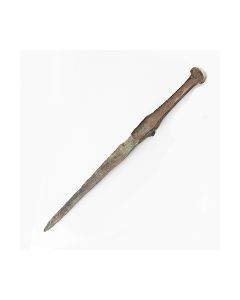 Luristanischer Lappendolch
Luristanischer LappendolchHervorragend erhaltener 28cm langer Bronzedolch aus Luristan, an der persischen Westgrenze. 1100 bis 900 v. Chr. Eisenzeit I.
Price: on request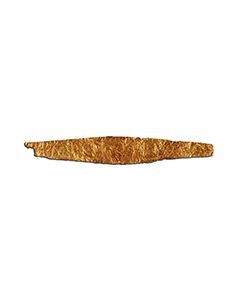 Roman gold diadem with bust of Licinius II
Roman gold diadem with bust of Licinius IIExciting and very well preserved piece.
Price: on request Luristanischer Lappendolch aus der Eisenzeit
Luristanischer Lappendolch aus der EisenzeitLange, schlanke Klinge, vorne spitz zulaufend. Metallkörper vollständig und intakt, in sehr guter Erhaltung. Schöne Patina.
Price: on request Published Roman fibula with celtic design
Published Roman fibula with celtic designAncient fibula from the Roman province of Britain. The design can be attributed to the celtic tribe of the Trinovantes or Iceni. From the famous Hattatt collection. Published twice.
Price: on request Große Terrakottafigur der Göttin Athena/Minerva - von höchster Seltenheit
Große Terrakottafigur der Göttin Athena/Minerva - von höchster SeltenheitDie Götting trägt einen attischen Helm mit breitem Federbusch, sich auf einen Schild stützend. Höhe 195 mm. Museale Erhaltung.
Price: on request Luristan bronze dagger with grip insert
Luristan bronze dagger with grip insertIt is very rare to find a Western Asiatic bronze dagger with an intact insert inside the grip. Dating to Iron Age Luristan, 1100 to 900 BC.
Price: on request Red figure Oinochoe from an old German collection
Red figure Oinochoe from an old German collectionShowing Eros and a female dancer. Excellent condition and brilliant colors, very fine work. 4th century BC.
Price: on request Elamite cylinder seal for Aham-Lurshi
Elamite cylinder seal for Aham-LurshiEngraved in fine detail and well preserved. Scene with three gods. Three columns of cuneiform inscription name the owner Aham-Lurshi. Approx. 1900 to 1600 BC.
Price: on request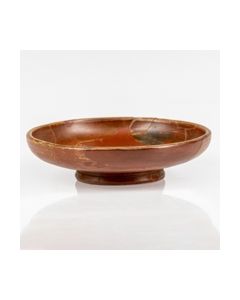 Roman Terra Sigillata bowl
Roman Terra Sigillata bowlFound in Southern Germany. From the well documented Hugo Rehorik collection.
Price: on request Uschepti der 21. Dynastie
Uschepti der 21. DynastieÄgyptische Totenfigur der 3. Zwischenzeit. Schöne türkise Fayence. Aufgemalte Hieroglyphen, Stirnband und Korb. Eindrucksvoller Uschepti.
Price: on request Two Roman jugs from the Rhineland
Two Roman jugs from the RhinelandFound 1966 till 1981 near the Roman city of Novaesium, today's Neuss in Germany. Novaesium was an early Roman foundation and with this is one of the oldest cities in Germany.
Price: on request Roman oil lamp with kissing lovers in mirror - parallel in a museum
Roman oil lamp with kissing lovers in mirror - parallel in a museumFrom the collection of Mr. Voigtmann, who had used the lamp. Moving relief in mirror, rare, possibly one of the rare original gallic motifs.
Price: on request Museumswürdiger Glockenkrater aus dem 4. Jh. v. Chr.
Museumswürdiger Glockenkrater aus dem 4. Jh. v. Chr.Auf der einen Seite Komposition aus sitzendem jugendlichem Dionysos und einem stehenden Mädchen, auf der anderen Seite zwei Manteljünglinge. Perfekt erhalten.
Price: on request Lekythos from Toledo Museum collection
Lekythos from Toledo Museum collectionEx collection Prof. G. Olcott, the first Columbia University professor for Roman archeology. Acquired from his estate 1912 by the Toledo Museum (Ohio), in the museum collection until 2017. Found in Apulia.
Price: on request Roman intaglio
Roman intaglioThis intaglio from Roman times shows a goddess in dynamic pose. The orange glass paste imitates carnelian.
Price: on request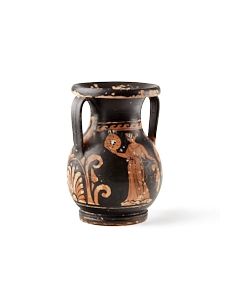 Perfectly preserved Apulian pelike
Perfectly preserved Apulian pelikeFrom the collection of Prof. Dr. Schmid, acquired 1977 at the Aloys Faust Gallery, Cologne. With ArtLoss Certificate.
Price: on request Roman square shaped glass paste
Roman square shaped glass pasteThe turquoise glass paste has two standing warriors as a motive. Simple work dating to Roman Imperial times.
Price: on request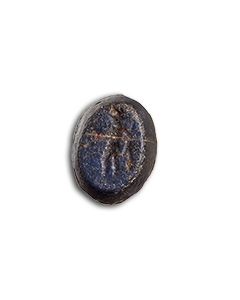 Ancient intaglio
Ancient intaglioA scene with a young man is moulded into dark blue glass. Insert stone dating to Roman Imperial times.
Price: on request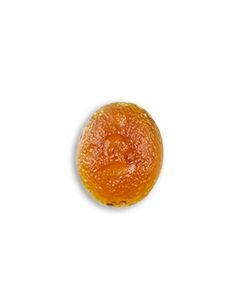 Roman intaglio with crouching woman
Roman intaglio with crouching womanThe woman is possibly a depiction of Venus. The orange colour of the glass paste is imitating Carnelian.
Price: on request

